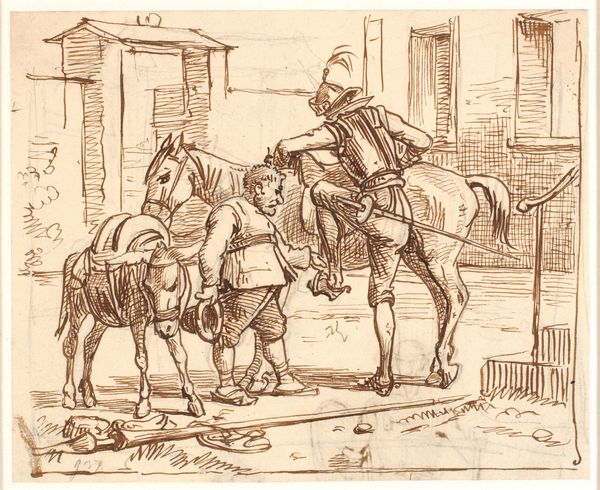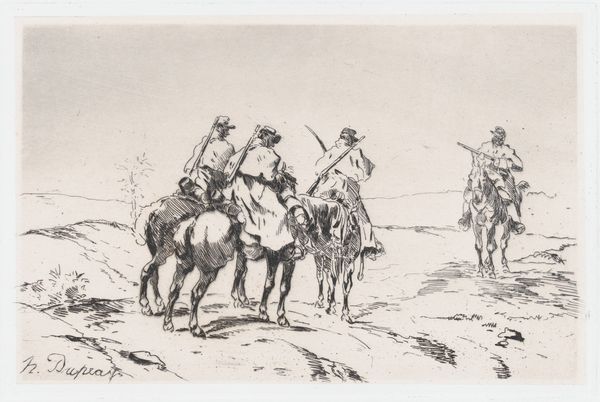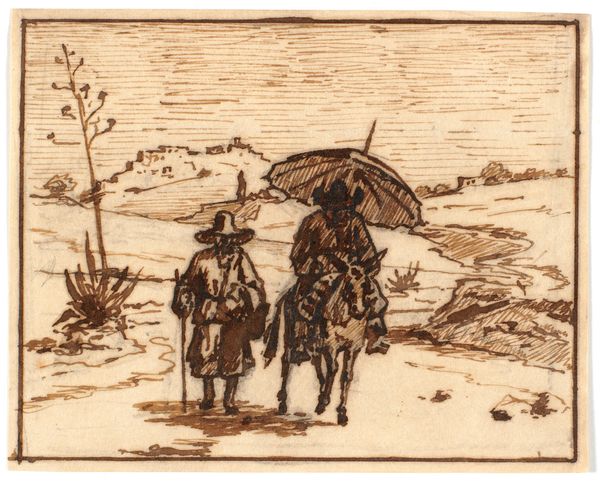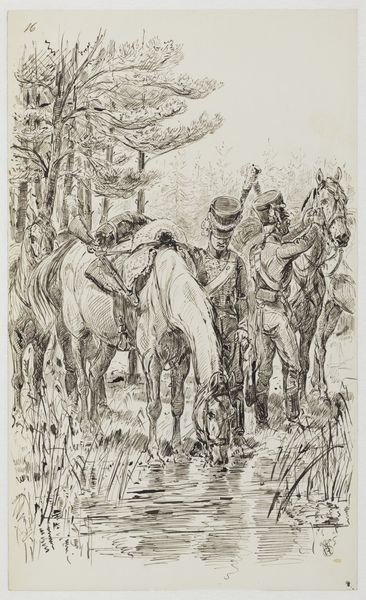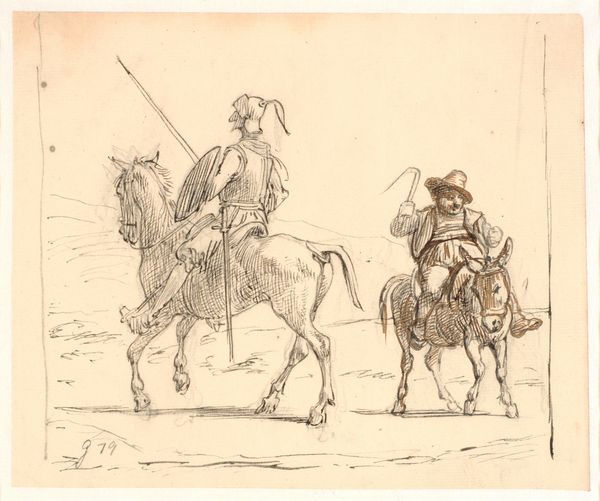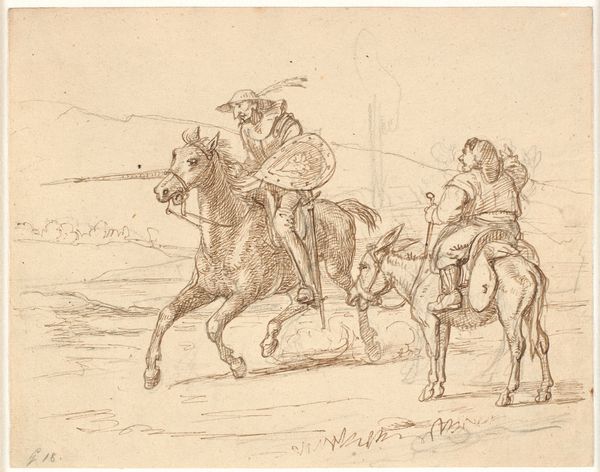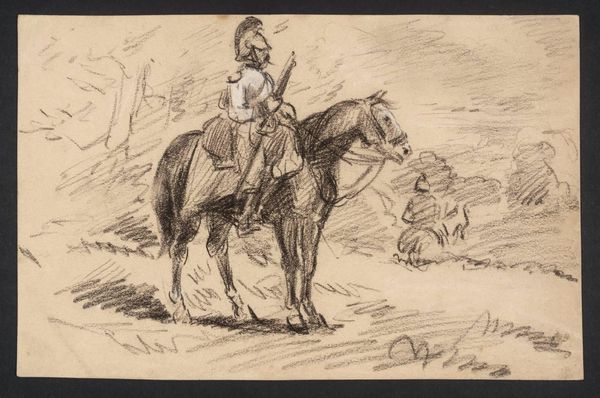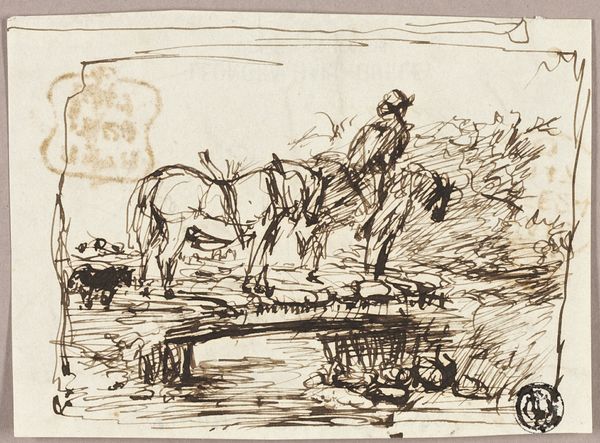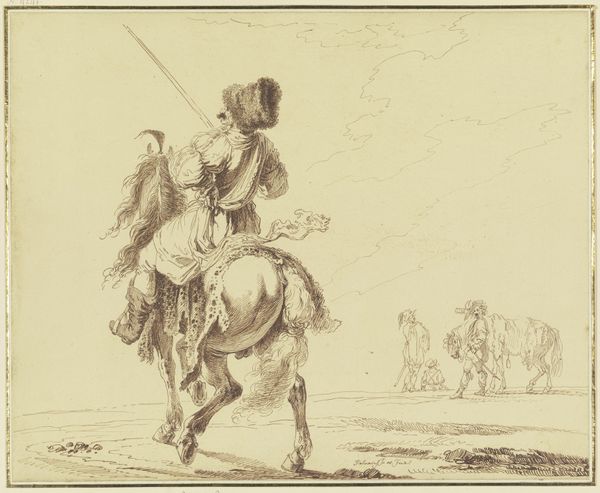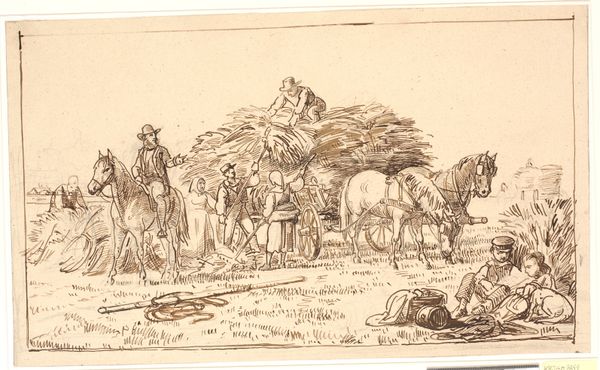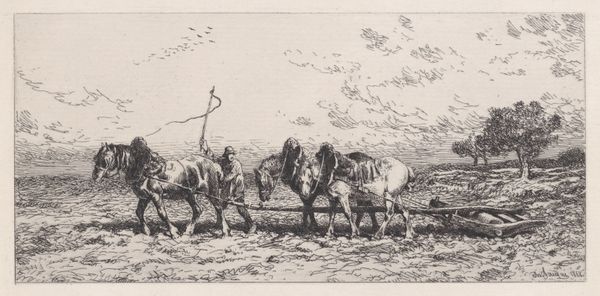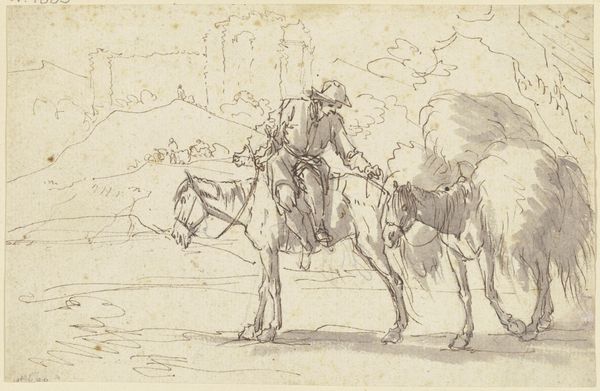
Sancho Pansa fortæller historien om gederne 1810 - 1873
0:00
0:00
drawing, ink, pen
#
landscape illustration sketch
#
drawing
#
ink drawing
#
narrative-art
#
pen illustration
#
pen sketch
#
landscape
#
personal sketchbook
#
ink
#
ink drawing experimentation
#
romanticism
#
pen-ink sketch
#
botanical drawing
#
pen work
#
pen
#
genre-painting
#
storyboard and sketchbook work
Dimensions: 199 mm (height) x 241 mm (width) (bladmaal)
Curator: Here we have Wilhelm Marstrand’s "Sancho Pansa fortæller historien om gederne," or "Sancho Pansa Telling the Story of the Goats," created sometime between 1810 and 1873. It’s a pen and ink drawing, quite a departure from Marstrand's better-known oil paintings. Editor: Immediately, I’m struck by the stark contrast. The sepia ink on the off-white paper creates a sense of aged fragility, almost like viewing a faded memory of Cervantes' world. Curator: Indeed. Considering Marstrand’s social standing, we have to analyze this through the lens of Romanticism. Think of the accessibility of pen and ink at that time. Was he trying to move away from traditional workshop methods in favor of greater control over the artistic process? It's almost a mass producible form of art, theoretically. Editor: I see your point about accessibility. The figure of Sancho Pansa himself embodies that too—a common man amidst the grand narratives of nobility. His stories would often include tales that served as commentary on social structure, exposing inequalities. Curator: Precisely. Look closely at the pen work itself. Notice the distinct lines used to delineate the landscape versus the characters, emphasizing the sheer physicality of the narrative, and highlighting the act of mark-making as central to the creation of meaning. The raw quality almost makes it feel more immediate, more ‘real’ than a polished oil painting would. Editor: And those zig-zag lines in the foreground – they're almost jarringly modern in their abstraction. The material here really seems secondary to what feels like intentional disengagement and artistic liberty. The way it depicts this particular story about the goats, too – how narratives, even comical ones, are shaped by those who wield the pen, or, in a larger sense, the power. Curator: Yes, the seemingly simple medium belies a layered interrogation of storytelling and class. I now can’t help thinking about how those pen strokes directly result from very particular types of labor available to a relatively privileged male artist like Marstrand at the time. Editor: That makes me ponder how this art, even with its themes of inclusivity, still operates within a system where visibility and historical record often favor particular identities and hands. Curator: Definitely. It gives us much to consider, beyond a simple drawing. Editor: Absolutely, more than a snapshot, it is an exploration of narrative agency and artistic intervention.
Comments
No comments
Be the first to comment and join the conversation on the ultimate creative platform.
